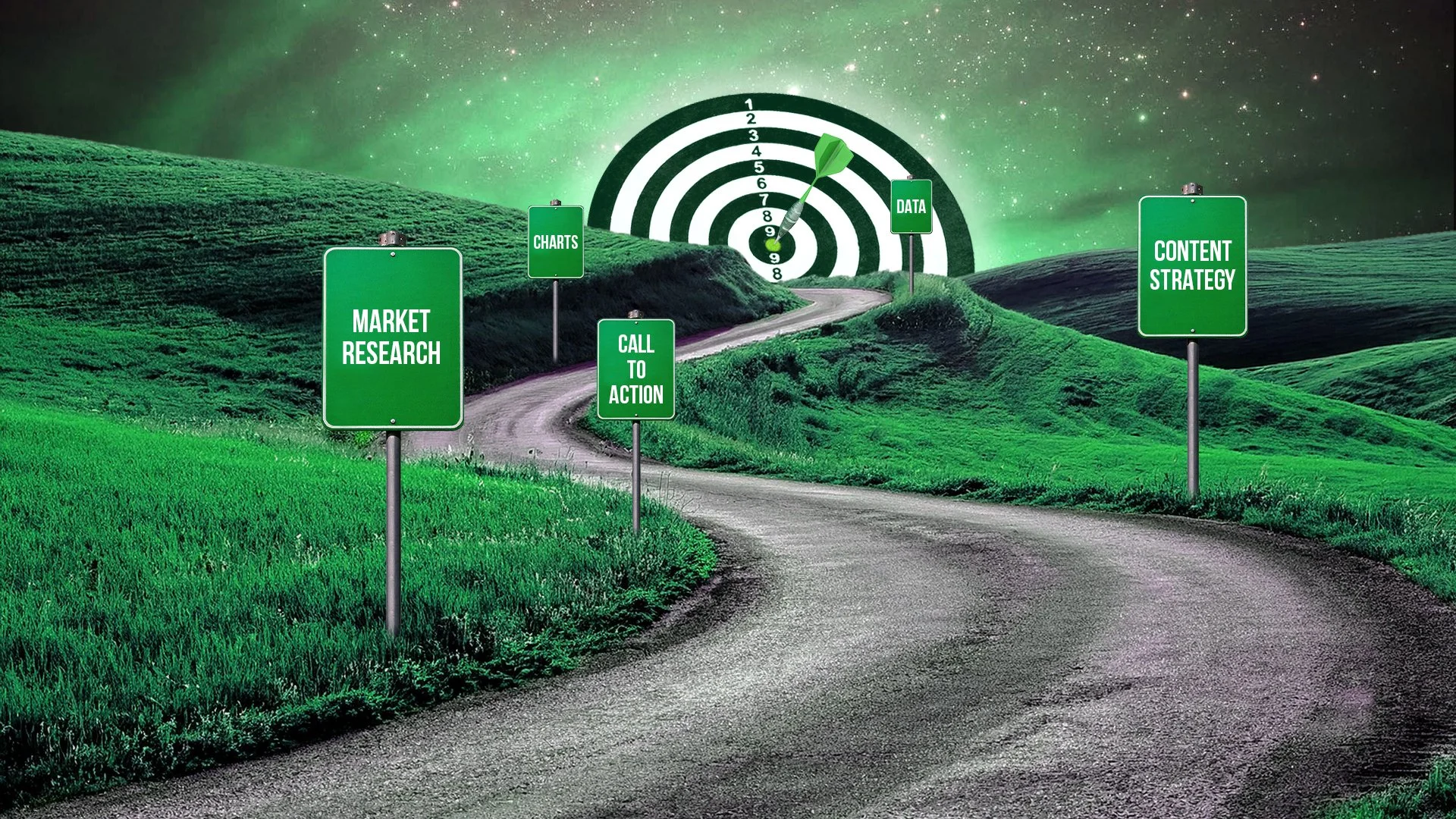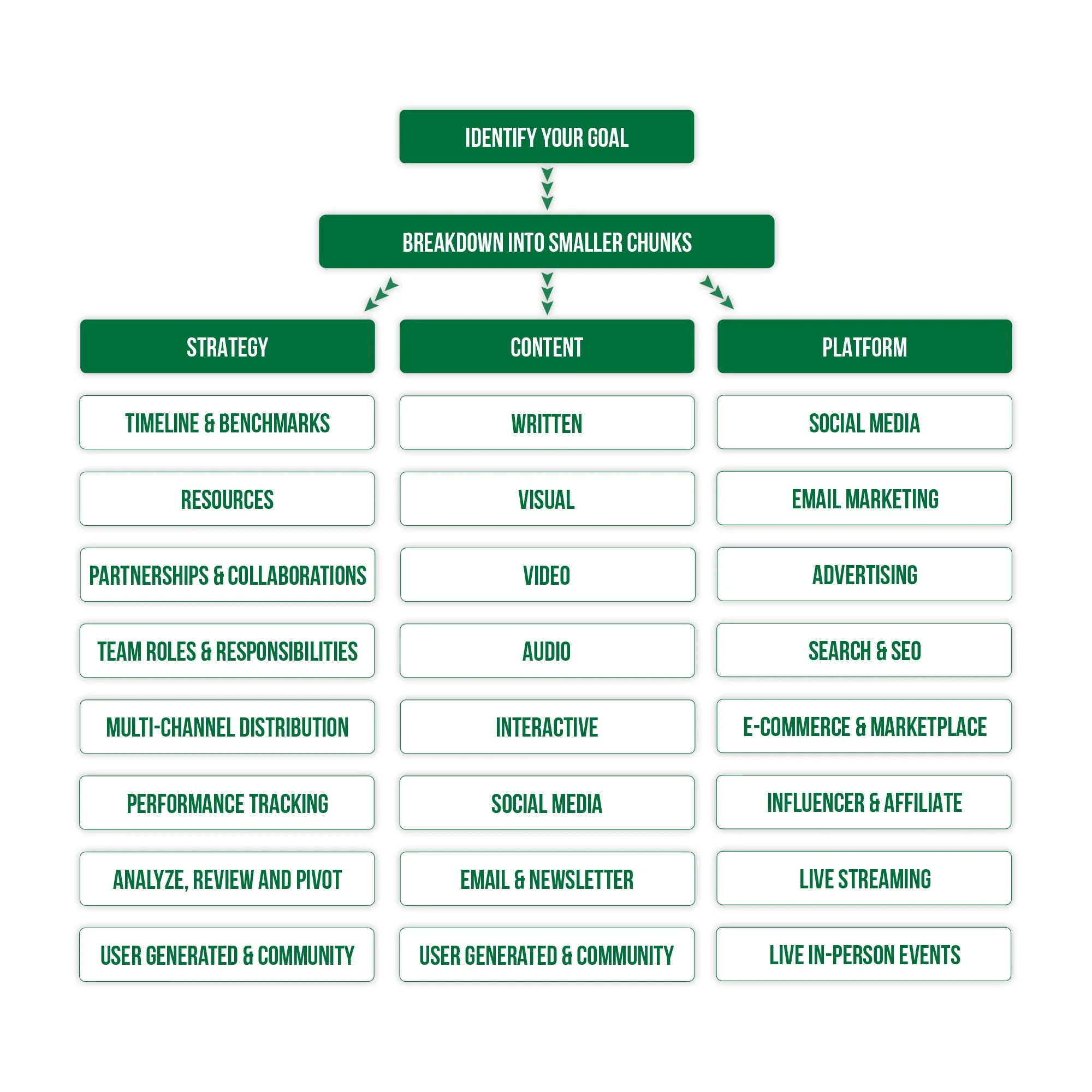See Through the Complexity of Marketing Campaigns
Marketing campaigns can be complex, but with the right approach, they become powerful and effective. Managing brand presence on multiple platforms, each deadline, and finally, the countless assets required to come together to drive a successful strategy. It’s easy to get lost in the chaos, unsure of where to focus your energy. Even the most complex campaigns can become manageable when you step back, see the big picture, and find clarity.
If you’ve ever felt overwhelmed by the sheer scope of a campaign, this guide is for you. Here’s how to cut through the noise, simplify your approach, and find a more focused, effective strategy.
First, Understand the Big Picture
Before diving into the details, take a moment to zoom out and connect with the primary purpose of your campaign:
What is the campaign’s primary goal? Are you driving awareness, generating leads, or boosting conversions?
Who is the audience? What do they care about, and how does your campaign solve their problem? What void are you filling? What is the demand for your solution intended to fill this void?
How will success be measured? Identify a few key metrics that matter most.
Seeing the big picture gives you a roadmap. When you know where you’re going, it’s easier to navigate the journey without getting sidetracked.
Break Down the Complexity into Manageable Pieces
Complex campaigns often feel overwhelming because they aren’t broken into digestible parts. Simplify your journey by breaking it down into three major components:
Chunking the Campaign: Divide the project into smaller sections—strategy, content creation, platform execution, and analysis. Focus on one piece at a time.
Visualize the Workflow: Use flowcharts, dashboards, or project management tools to see the structure of your campaign. Clarity comes when you can see the plan and assign task items based on a set timeline of when specific tasks need to be completed. Consider items that require a particular lead time to be completed based on supply chain, season, annual budget planning, and other deadlines that can impact your ability to complete each task.
Simplifying the To-Do List: Ask, “What’s essential for this campaign to succeed?” Eliminate tasks that don’t align with your core goals. Doing so will keep your guardrails up, guiding you from distractions and unnecessarily overspending resources.
By breaking down the campaign, you’ll turn an intimidating list into something actionable and achievable.
Not every task or channel carries equal weight, so prioritization is key to maintaining focus and driving results. Start by identifying high-impact efforts—determine which platforms and tactics deliver the best outcomes for your audience and concentrate your energy there. Next, rank your tasks by creating a hierarchy of priorities, distinguishing between what is mission-critical and what can wait. Finally, cut the noise by avoiding the temptation to do everything at once. If a tactic doesn’t directly serve your goals, let it go. By prioritizing effectively, you can focus confidently on what truly creates value, rather than spreading yourself too thin.
Clarity begins with effective communication, both within your team and with your audience. Start by simplifying your message—if the campaign’s purpose and value can’t be summed up in one sentence, refine it until it’s crystal clear. Ensure your team is aligned by making the strategy, timeline, and individual roles easy to understand. Don’t hesitate to seek outside feedback. Fresh perspectives can reveal areas where the campaign might be overcomplicated. If your team or audience struggles to grasp the campaign’s focus, it’s a clear signal that further simplification is needed.
Data is your greatest ally when striving for clarity in a campaign, providing a roadmap to make informed and impactful decisions. Begin by gathering insights to understand your audience’s behavior—what platforms they engage with, what content resonates, and where they drop off. These insights help you focus your efforts where they matter most. Continuously track performance metrics to identify what’s working and pivot in real-time when something isn’t delivering results. Let data act as your compass, but don’t fall into the trap of overanalyzing—focus on the metrics that tell a meaningful story, such as conversion rates or engagement trends, rather than vanity numbers. Data also reveals patterns and opportunities you may not see otherwise, empowering you to refine your strategy and eliminate guesswork. By embracing data as a tool for clarity, you can not only avoid unnecessary distractions but also unlock smarter, more effective campaigns that truly connect with your audience.
Clarity for your audience should always be your guiding principle. Start by asking yourself if your campaign is easy to understand—would your audience grasp its purpose in five seconds? If not, refine your messaging to make it clearer. Evaluate the customer journey to ensure it’s smooth and free of barriers, such as too many calls-to-action or overly complex landing pages that might overwhelm or confuse. Consistency across channels is also key. Cohesive messaging and visuals create a seamless experience that reinforces your campaign’s purpose. When your campaign feels simple, intuitive, and engaging for your audience, you’ve achieved true clarity.
Seeing through the complexity of a marketing campaign requires a shift in mindset. Instead of diving headfirst into the details, step back. Visualize the bigger picture, simplify your approach, and focus on what truly matters.
Clarity isn’t just for your team—it’s for your audience. When you can cut through the chaos and deliver a focused, cohesive campaign, you create a better experience for everyone involved.
Key Takeaways
Clarity Starts with a Clear Purpose
Define the “why” of your campaign before diving into details to stay focused on your end goal.
Data is Your Guide, Not Your Burden
Use meaningful metrics to make informed decisions and adjust your approach rather than getting bogged down by vanity numbers.
Simplify for Your Audience
A campaign’s success lies in how easily your audience can engage with and act on your message.
Break it Down to Build it Up
Simplify complex campaigns by dividing them into smaller, manageable parts that are easier to tackle.
Consistency Creates Trust
A cohesive message and design across platforms ensure your audience stays engaged and understands your brand.
Feedback Leads to Refinement
Seeking outside perspectives helps uncover blind spots, making your campaign clearer and more effective.
Prioritize Results, Not Noise
Focus on high-impact efforts that directly contribute to your campaign’s objectives instead of trying to do everything at once.



